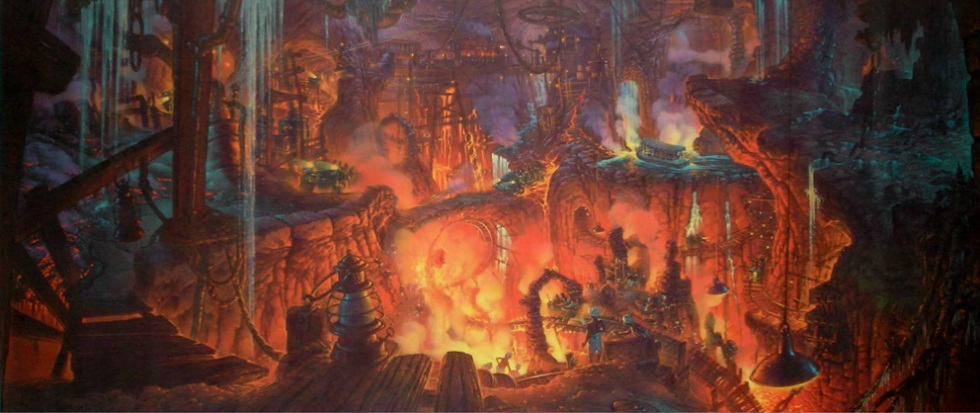
A Criticism of Adequacy
When a videogame cracks that glowing zone under the ribs or behind the ears, it creates a unquenchable tang of desire to relive the experience, see it from all angles, pick apart the sonic layers until every molecule is memorized. It’s a compulsion to bridge the gap between the work and its resonance within us, and often we flail about in language to scaffold our understanding. This can lead to an academic obsession, a need for tribal fandom, or a lust to create reflective and ekphrastic art, all ways to make sense of the wind-up created within us when a book, movie, videogame, record, etc. really nails what we’re feeling and living, but unable to explicate.
As such, the nature of book series like 33 1/3 and their novella-sized interrogations of albums and Boss Fight’s collection of long-form videogame writing is clear—to dive deep into the products we consume, and that consume us in turn. From the Boss Fight “About Us” page:
“Each of our books takes a critical, historical, and personal look at a single game.
Some books are about the history of the game’s creation, some focus on particular elements like level design, story, and music, some investigate the subculture that has formed around a game, some will bring in outside art, science, and media, and some have a strong autobiographical element.”
These are worthwhile aims, but is a book-length text project really the best way to interrogate our favorite videogames? This was my primary thought as I read Katamari Damacy by L. E. Hall, one of Boss Fight’s most recent titles. It’s a thoroughly researched and clearly crafted morsel, wherein Hall interviews series creator Keita Takahashi and others while doing the digging on the beloved dung-beetle simulator, a breezy celebration of an already well-celebrated game. And therein lies my nagging and possibly unfair sense of dissatisfaction with the book.
Our experiences with art are so singular and individual that to read a generalized breakdown of the creation of a game, needing to appeal to a general audience, can’t help but feel skeletal. And the backstage drama for Katamari Damacy is too nonexistent for any other earth-shattering revelations. The game’s largest obstacle was the upper-level marketing madness that deemed it too odd for Western audiences at first, but in the end elegant and fresh game design collided with magnetic visuals, eternally hummable tunes, and an impossibly cheap and accessible price point in order to launch Takahashi’s game into the cosmos to shine bright as a star. The trajectory is easily assumed even if one isn’t already familiar with the story: Weird game breaks big, publisher milks IP to the very last drop, cherished creator wishes he could talk about his new work without constantly readdressing the old.
This is fine and good, and Hall does a great job of outlining the aesthetics of Katamari Damacy against Takahashi’s growth as an artist and developer as well as the kaleidoscope of sequels of diminishing quality. But for a game which is so singular in its own vision I wish the book could have focused more on discrete connections between it and other art, emotion, aspects of life. Takahashi’s work bulges with the fantastic, but reading him speak about it doesn’t reveal any galaxy-shattering secrets behind Katamari—the artist rarely has the most interesting things to say about their own work. In the end, mere descriptions of the gameplay, or a breakdown of the influences pale to the actual experience of playing this videogame. Perhaps this is the curse of text, or perhaps are there other ways to literally engage with a piece without settling for a timeline.
Hall’s analysis gets tantalizingly close, as when it starts to connect the King of All Cosmos and the Japanese father figure. Takahashi cracks the egg, noting “The typical father in Japan is like a king: ‘I decide. You do this. I don’t like that.’ Everyone is familiar with the type in real life.” Hall notes that this is a particularity of the game’s native culture, but stops with the fact that this Japanese drama-style father figure would have been easily recognized by the Japanese audience, even if it might have been overlooked out west. “Luckily, even if some of the game’s subtler cultural cues go unnoticed, the whimsy of Katamari is impossible to miss.” I agree with the whimsy but feel quite strongly that, though the minute details may have been lost, the King of All Cosmos as a weird dad father figure could be deftly peeled apart for a Western player.
There’s also a moment where Hall speaks with Takahashi about how his game might reflect mass consumption, but concludes that “while Takahashi believes in environmental issues like fighting pollution and wastefulness, and speaks about them when delivering talks, that wasn’t on his mind when he was developing the game.” That may be how the author feels, but as Hall quotes Jordan Mammo in Kill Screen: “Katamari Damacy cheerfully depicts a kind of snow- balling addiction to acquisition that literally uproots the earth itself.” This is the string of colorful handkerchiefs I want pulled from Katamari, a game ripe for examination of consumerism and masculinity, but these threads are quickly abandoned here.
I shouldn’t, and don’t, expect Katamari Damacy the book to singularly shoulder the burden of a more robust critical examination of a game, or even a daring and abashed creative dissection. Games journalism and criticism at large could do with a wider array of lenses and voices through which we really investigate videogames. Hall does a fantastic job of pulling together many disparate strings detailing the impetus and creation of the Katamari Damacy, as well as portraying the gameplay via text. But I’m deflated that it doesn’t push beyond the known boundaries of either the videogames or the form of the book, it simply does an adequate job of telling a fairly well-known or easily intuited tale about an extraordinary title.
Katamari Damacy blindsided videogames with style and simplicity, imploding the paradigm of violence for a brief, fantastic moment. I believe that critical, personal, and creative engagement with games can do the same, but maybe I’m asking too much.





